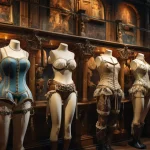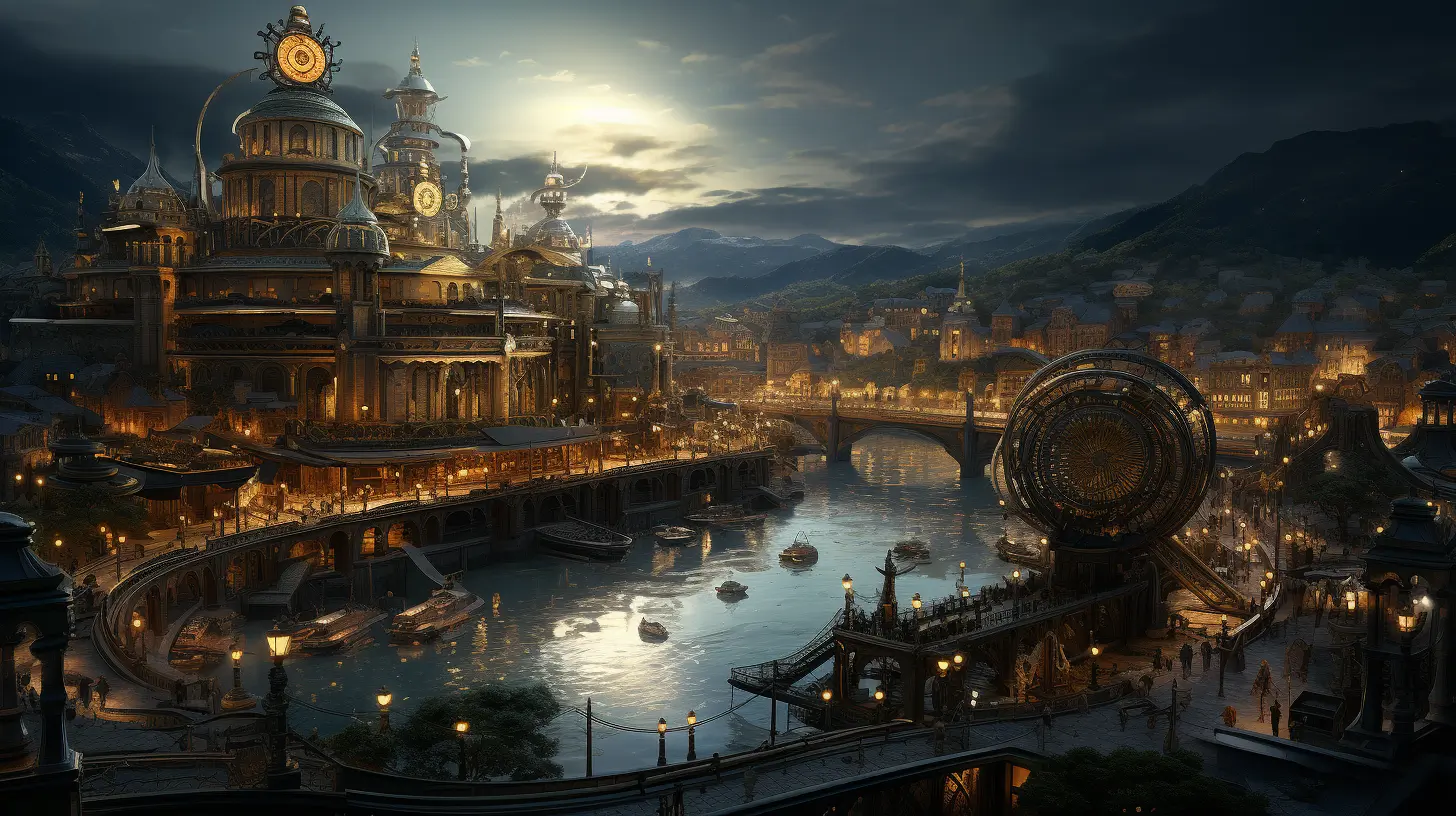
The Rise of Steampunk: A Cultural and Historical Perspective
A Dive into the Clockwork Heart of Steampunk Culture
Imagine stepping into a world where brass gears and Victorian elegance collide with a futuristic vision. That’s the realm of Steampunk culture, a curious blend of the past, the present, and the speculative future. It’s like cracking open a dusty, leather-bound book, only to find a hologram flickering inside. Steampunk isn’t just a genre; it’s a time-traveling experience, a rebellious nod to the constraints of conventional timelines.
This isn’t your standard historical fare. No, it’s a vibrant tapestry woven with the threads of imagination, technology, and a dash of anarchy. Picture this: top hats and corsets armed with steam-powered gadgets, set against the backdrop of a world that never was but could have been. Steampunk is the love child of Jules Verne and a mad inventor, dreaming up worlds where steam engines and airships rule the skies, and the future is but a gear-turn away.
In this exploration, we’re not just unearthing the roots of Steampunk; we’re delving into its soul. We’ll trace its lineage from the foggy streets of Victorian London to the silver screens of Hollywood, from the pages of worn-out books to the bold statements of fashion runways. Join me in this journey through the cogs and wheels of Steampunk culture, where history dances with fantasy, and reality gets a mechanical upgrade.
Origins of Steampunk: In the Guts of the Machine
Stepping into the origins of Steampunk culture is like wandering into a mechanic’s workshop, only instead of cars, there are time machines and fantastical contraptions. It’s here, in the smog and soot of the Industrial Revolution, that the seeds of Steampunk were first sown. This genre isn’t born from thin air; it’s forged in the furnaces of the 19th century, where steam was king, and imagination was limitless.
The godfathers of Steampunk, if you will, are those literary greats like Jules Verne and H.G. Wells. These weren’t just writers; they were visionaries, prophets of a world where science and fantasy intertwine. In their stories, you find submarines exploring uncharted depths and time machines tearing through the fabric of the era. These tales weren’t mere escapism; they were a reflection, a mirror held up to the society’s fascination and fear of technological advancement.
But it’s not all about the tech, is it? In the heart of Steampunk lies a spirit of rebellion, a challenge to the status quo. It’s an artistic uprising against the rigid confines of historical accuracy, a wild dance on the grave of convention. The Victorian era, with its strict morals and rigid class system, gets a punk makeover, complete with leather boots and a brass attitude.
Steampunk is more than just a literary genre; it’s a reimagining of history. It’s where the world as we know it takes a sharp left turn, venturing into realms of alternate possibilities and what-ifs. It’s a world where the steam engine reigns supreme, and the possibilities are as limitless as the imagination.
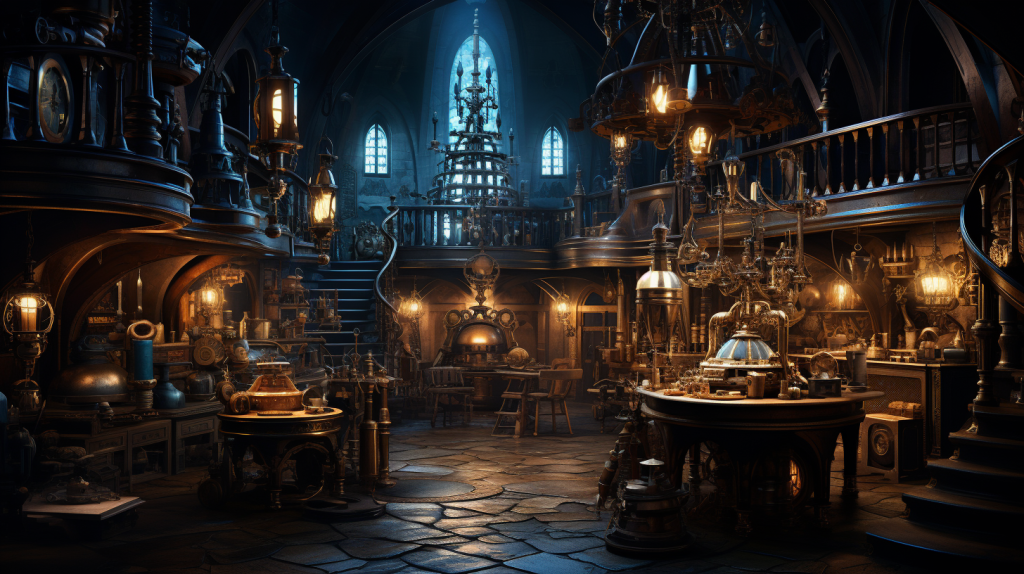
Steampunk in Literature: When Gears Grind the Pages
Now, let’s crack open the dusty covers of Steampunk literature, where the ink is mixed with oil and the pages are scented with steam. This is where Steampunk culture takes a literary leap, transcending from mere fantasy into a realm that challenges our perceptions of reality and history.
In the world of Steampunk literature, the classics have a twist. Imagine “Moby-Dick” but with a steam-powered whale, or “Pride and Prejudice” set in a world where Elizabeth Bennet wields a gear-laden blunderbuss. These aren’t your high school English teacher’s reading list; they’re rebellious rewrites of history, where every page crackles with the energy of a Tesla coil.
The hallmark of Steampunk novels isn’t just their inventive gadgets or alternate history settings; it’s their ability to mirror societal shifts and technological advancements. These books are like a funhouse mirror, reflecting our world but with a wild, whimsical distortion. They’re a commentary, sometimes subtle, sometimes as subtle as a sledgehammer, on our relationship with technology and progress.
In these pages, you’ll find characters that aren’t just content with their lot in life. They’re tinkerers, dreamers, rebels with a cause. They don’t just accept the world as it is; they reimagine it, rebuild it, sometimes literally. These characters aren’t just fighting against villains; they’re challenging societal norms, pushing against the boundaries of their world.
Steampunk literature is a treasure trove of what-ifs. What if the Industrial Revolution went a different way? What if electricity wasn’t the king of power? What if the future was built on gears and steam, not silicon and screens? It’s in these stories that Steampunk finds its voice, a voice that’s as much about looking back as it is about dreaming forward.
Steampunk in Cinema: When the Screen Embraces Gears and Steam
Let’s roll the film on Steampunk in the world of cinema, where the genre leaps off the page and onto the silver screen. This is where Steampunk culture transcends literature and becomes a visual feast, a spectacle of brass and steam that captivates the eyes and stirs the imagination.
In Steampunk cinema, every frame is an artwork. Think of movies where the background isn’t just a backdrop; it’s a character in itself. The airships aren’t just floating props; they’re majestic vessels sailing across a sky of possibilities. The costumes are more than period pieces; they’re statements, declarations of a world where the past and the future collide in a beautiful anachronism.
What makes Steampunk films stand out isn’t just their unique aesthetic; it’s how they use that aesthetic to tell a story. These films are visual metaphors, with every gear and steam whistle symbolizing something larger, something deeper. They’re not just entertainment; they’re explorations, journeys into worlds that defy the constraints of time and logic.
In these cinematic tales, the line between machine and man blurs. Characters meld with their inventions, becoming part human, part machine, all hero. The villains, too, are more than just cardboard cutouts; they’re reflections of our own fears and fascinations with technology. In a Steampunk film, the antagonist might be a rogue automaton or a society enslaved by its own inventions.
Steampunk cinema is where the genre truly comes to life, where its themes of rebellion, innovation, and imagination are writ large on the screen. It’s a genre that doesn’t just entertain; it challenges, provokes, and inspires. It’s a testament to the power of visual storytelling, a reminder that sometimes the most compelling narratives are those that dare to rewrite the rules.
Steampunk Fashion: A Sartorial Revolution
Now, let’s talk about the way Steampunk has strutted its way into fashion, where corsets meet cogs, and goggles become more than a mere accessory. This is where Steampunk culture isn’t just something you read or watch; it’s something you wear, a statement you make with every brass button and gear-laden hat.
Steampunk fashion is like a historical novel you can drape over your shoulders. It’s Victorian elegance spliced with industrial ruggedness. Picture this: a top hat decked out with watch parts, a dress with mechanical wings, boots that look like they could stomp through time. This isn’t just dressing up; it’s an act of rebellion, a sartorial middle finger to the blandness of mainstream fashion.
But it’s not all about looking cool (though, let’s be honest, it does look incredibly cool). Steampunk attire is a narrative in itself. Each piece tells a story, a tale of a world that could’ve been, a history rewritten with threads and fabrics. Wearing Steampunk is like slipping into an alternate reality, one where history took a different turn, where the future is something you can touch, feel, and wear.
This fashion movement isn’t just about aesthetics; it’s about identity. In a world where everything is mass-produced and cookie-cutter, Steampunk stands out as a celebration of individuality and creativity. It’s a DIY culture, where people pour their hearts and souls into crafting outfits that are as unique as they are.
In the end, Steampunk fashion is more than just clothes. It’s a manifestation of the genre’s ethos, a tangible expression of its spirit of innovation and nonconformity. It’s a visual reminder that sometimes, the most profound statements are made not with words, but with the way we choose to present ourselves to the world

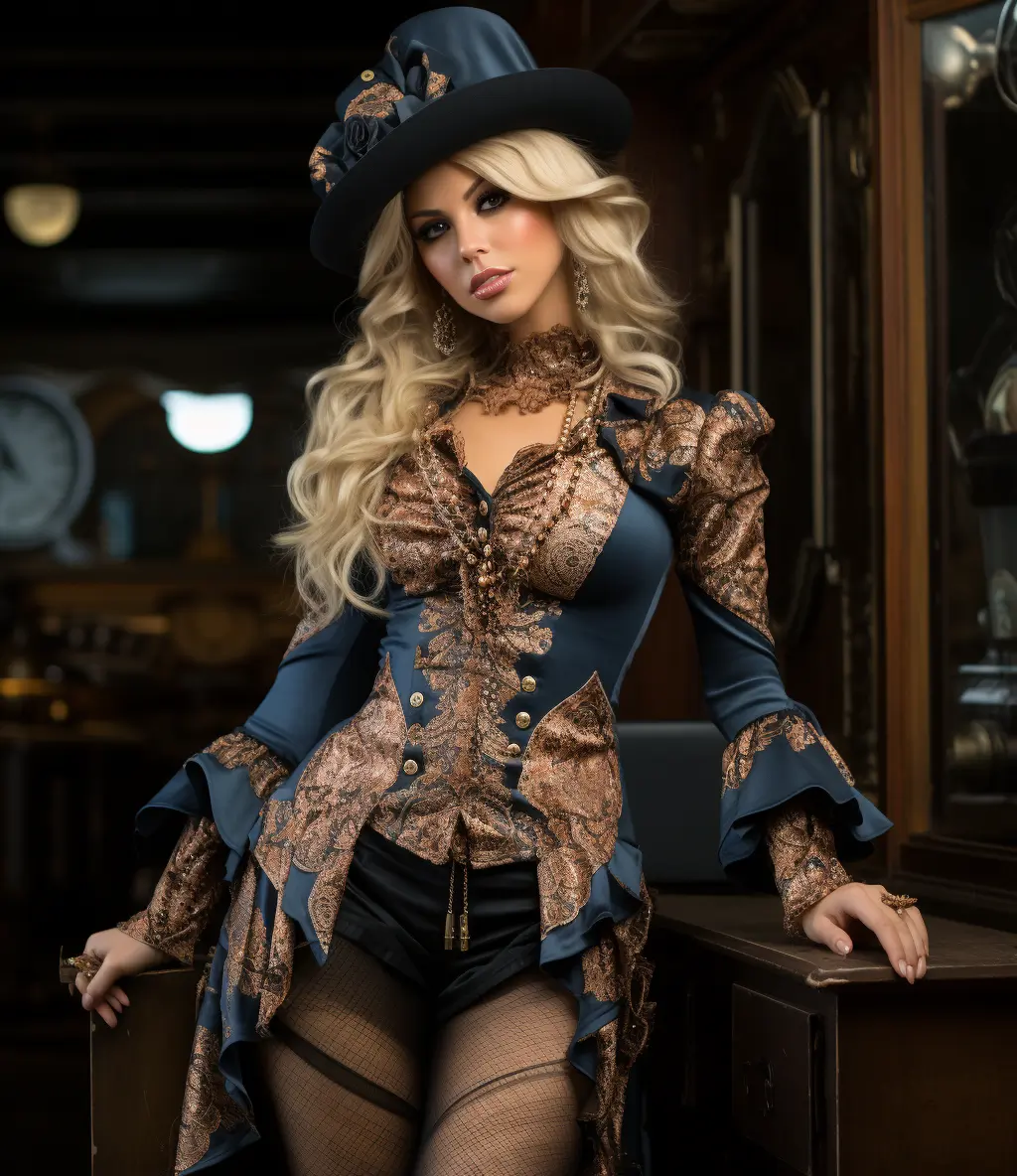
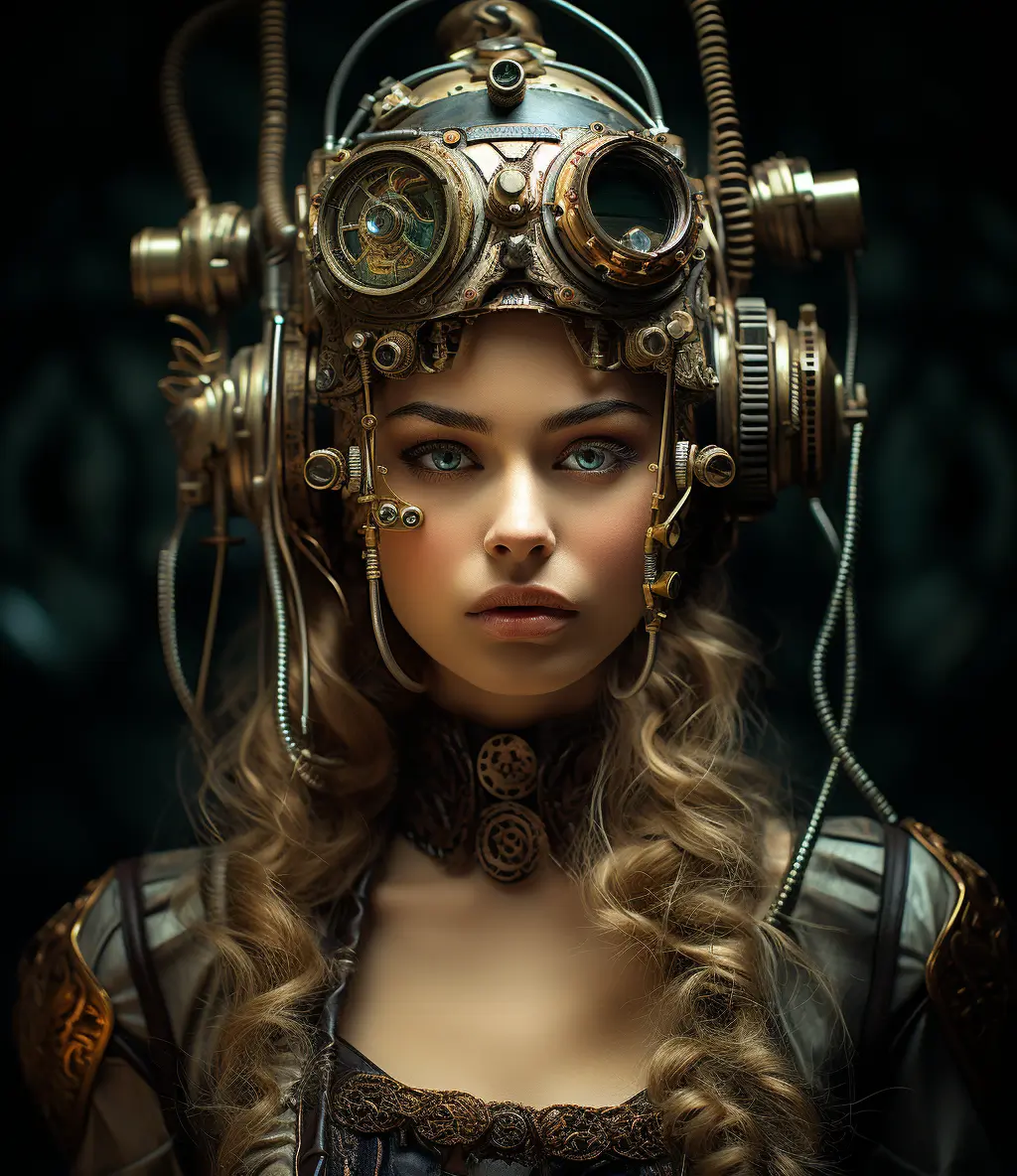



Steampunk’s Cultural Impact: More Than Just Gears and Steam
Let’s turn our attention to the broader cultural impact of Steampunk culture, where it’s not just about the aesthetic, but how it infiltrates and influences our everyday lives. Steampunk isn’t confined to books or screens; it’s a lifestyle, a way of seeing the world through brass-tinted goggles.
In modern subcultures, Steampunk is more than a fleeting trend; it’s a statement, a way to express discontent with the mundane, the ordinary. It’s a rebellion against the digital age, a yearning for a time when machines were mechanical and palpable. Steampunk aficionados don’t just wear the clothes or read the books; they live the ethos, crafting a reality where every gear and piston has a story.
But it’s not just a nostalgic trip down a reimagined memory lane. Steampunk also serves as a commentary on contemporary society. It’s a mirror reflecting our relationship with technology, our fascination and fear of a future where humans and machines are inextricably linked. It asks questions: What if the digital age never happened? What if steam was still king? These aren’t just hypotheticals; they’re reflections on our current trajectory, clothed in Victorian garb and mechanical arms.
Moreover, Steampunk has seeped into various aspects of culture: from fashion runways to music festivals, from art installations to themed cafes. It’s a testament to the genre’s versatility and appeal. Steampunk isn’t just a genre; it’s a canvas, where history, fantasy, and creativity converge to create something truly unique.
In essence, Steampunk culture is a lens through which we can re-examine our past, critique our present, and reimagine our future. It’s a celebration of human creativity and ingenuity, a reminder that even in a world of advancing technology, there’s always room for a bit of whimsy and wonder.
Steampunk Today and Tomorrow: Gearing Up for the Future
As we gear up to explore the current state and future trajectory of Steampunk culture, it’s clear this isn’t a passing fad. It’s a vibrant, evolving genre that continues to captivate and inspire. Today, Steampunk isn’t just tucked away in niche corners; it’s pulsing through the mainstream, leaving its brass-stamped mark across various facets of society.
In the here and now, Steampunk is a movement at full steam. It’s visible in art galleries showcasing Steampunk-inspired sculptures, in clubs where the beats of electro-swing fuse with the clinks of mechanical art, and in conventions where fans gather, decked out in their Steampunk finery, celebrating this shared passion. It’s a global community, a network of like-minded souls who find common ground in a love for the retro-futuristic.
But what about tomorrow? Predicting the future of Steampunk is like trying to chart a course through uncharted waters. However, one thing’s certain: it’s not slowing down. The genre’s adaptability and appeal suggest that it will continue to evolve, absorbing influences and reflecting the changing times.
We might see Steampunk morphing with emerging technologies, perhaps a fusion with virtual reality or augmented reality experiences, allowing us to step into those fantastical worlds we’ve only dreamed of. Or it could go deeper into its roots, embracing a more eco-friendly approach, reflecting a societal shift towards sustainability.
The beauty of Steampunk lies in its boundless potential, its ability to reimagine and reinvent itself continuously. It’s a cultural chameleon, adapting and thriving in an ever-changing world. Steampunk culture, in essence, is a journey through time – both a look back at where we’ve come from and a speculative leap into where we might be heading.
The Timeless Allure of Steampunk
As we pull the curtains on our exploration of Steampunk culture, it’s clear that its allure is anything but fleeting. Steampunk is a fascinating blend of nostalgia and futurism, a genre that defies the constraints of time and invites us to dream of what could have been and what still could be.
This journey through Steampunk’s realms – from its literary roots to cinematic expressions, from sartorial statements to its broad cultural impact – reveals a genre rich in imagination and creativity. It’s a testament to the human spirit’s unending quest for innovation, a celebration of the eccentric and the unconventional.
Steampunk isn’t just a fascination with the past; it’s a reimagining of history with the wisdom of the present and the dreams of the future. It’s a reminder that the world is not just what it is, but what it could be, shaped by our imagination and creativity.
In a world often dominated by digital screens and virtual realities, Steampunk offers a tangible, mechanical, and wonderfully tactile alternative. It’s a reminder of the beauty of craftsmanship, the joy of mechanical ingenuity, and the power of a well-told story.
Ultimately, Steampunk culture stands as a beacon for all who dare to dream differently, to envision a world where the gears of the past mesh seamlessly with the possibilities of the future. It’s a vivid, vibrant reminder that sometimes, the most extraordinary adventures lie not in the world as it is, but as it could have been.



